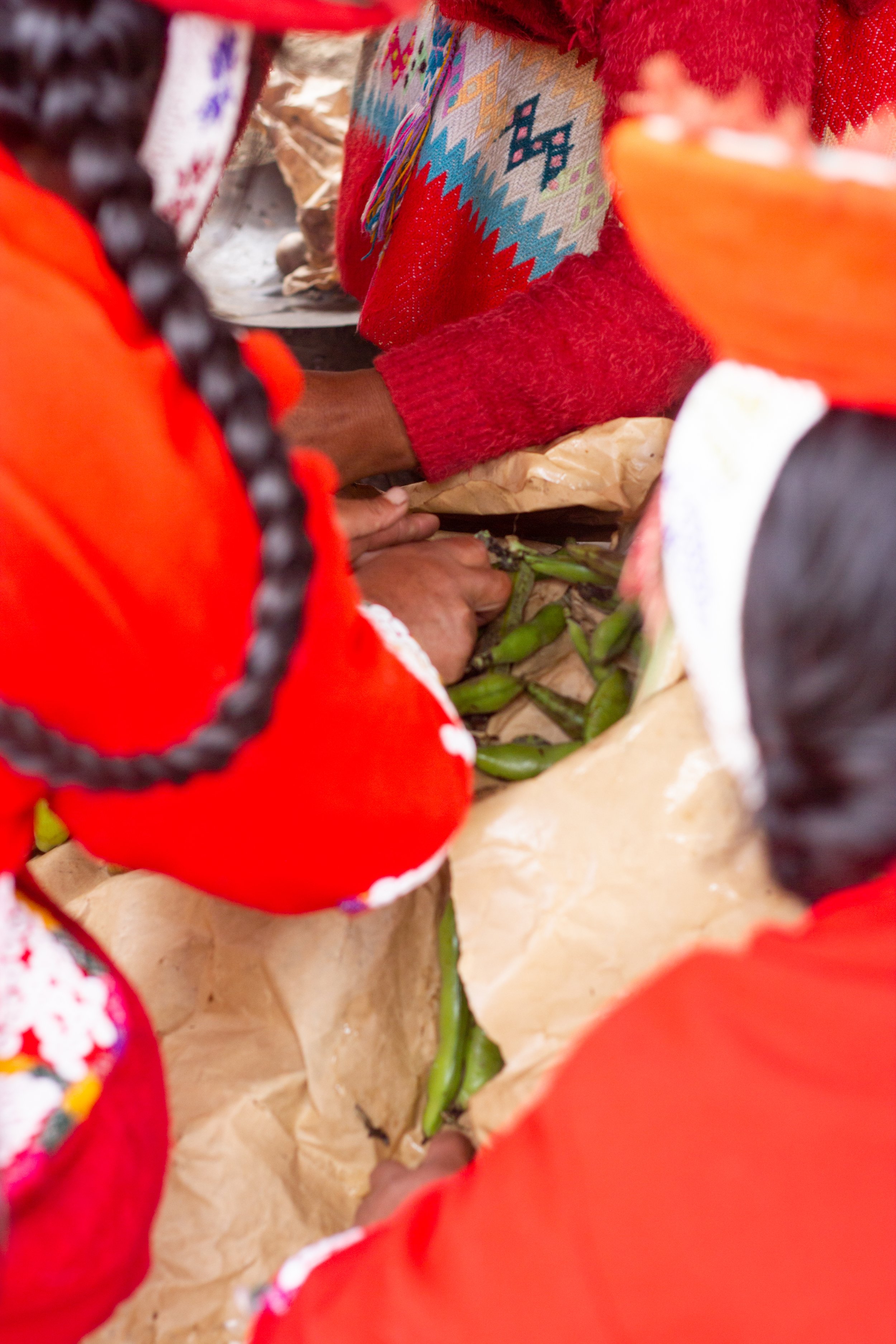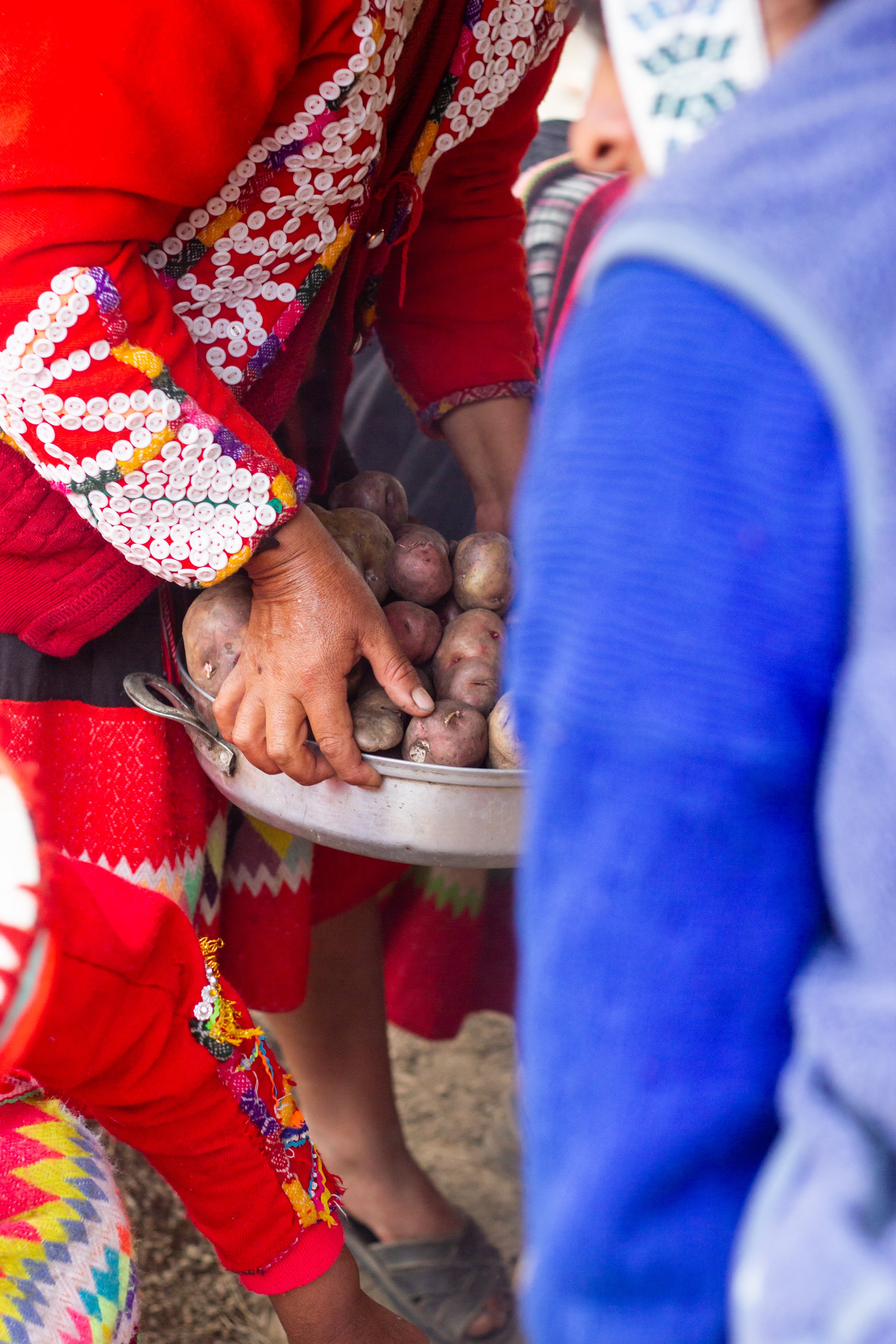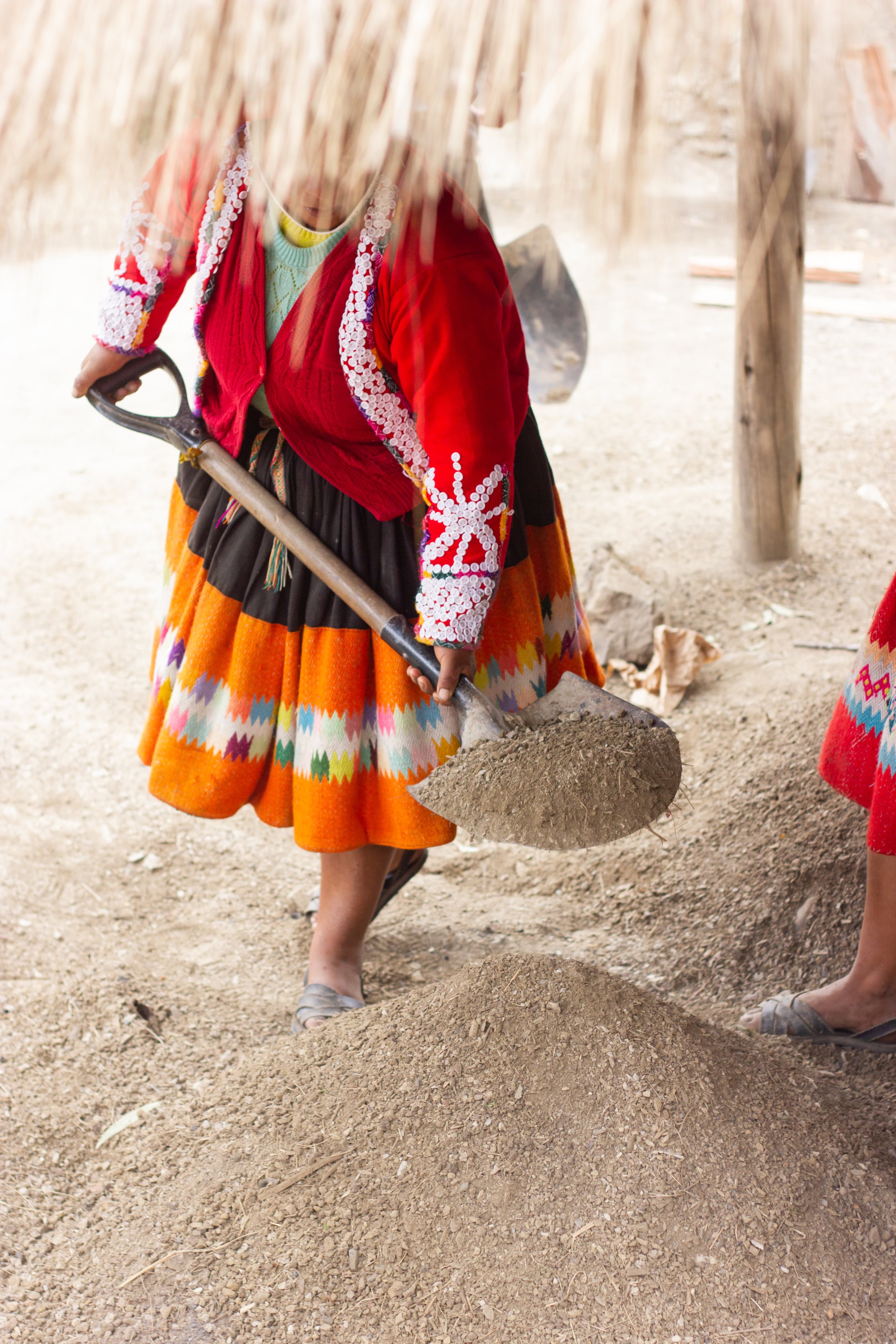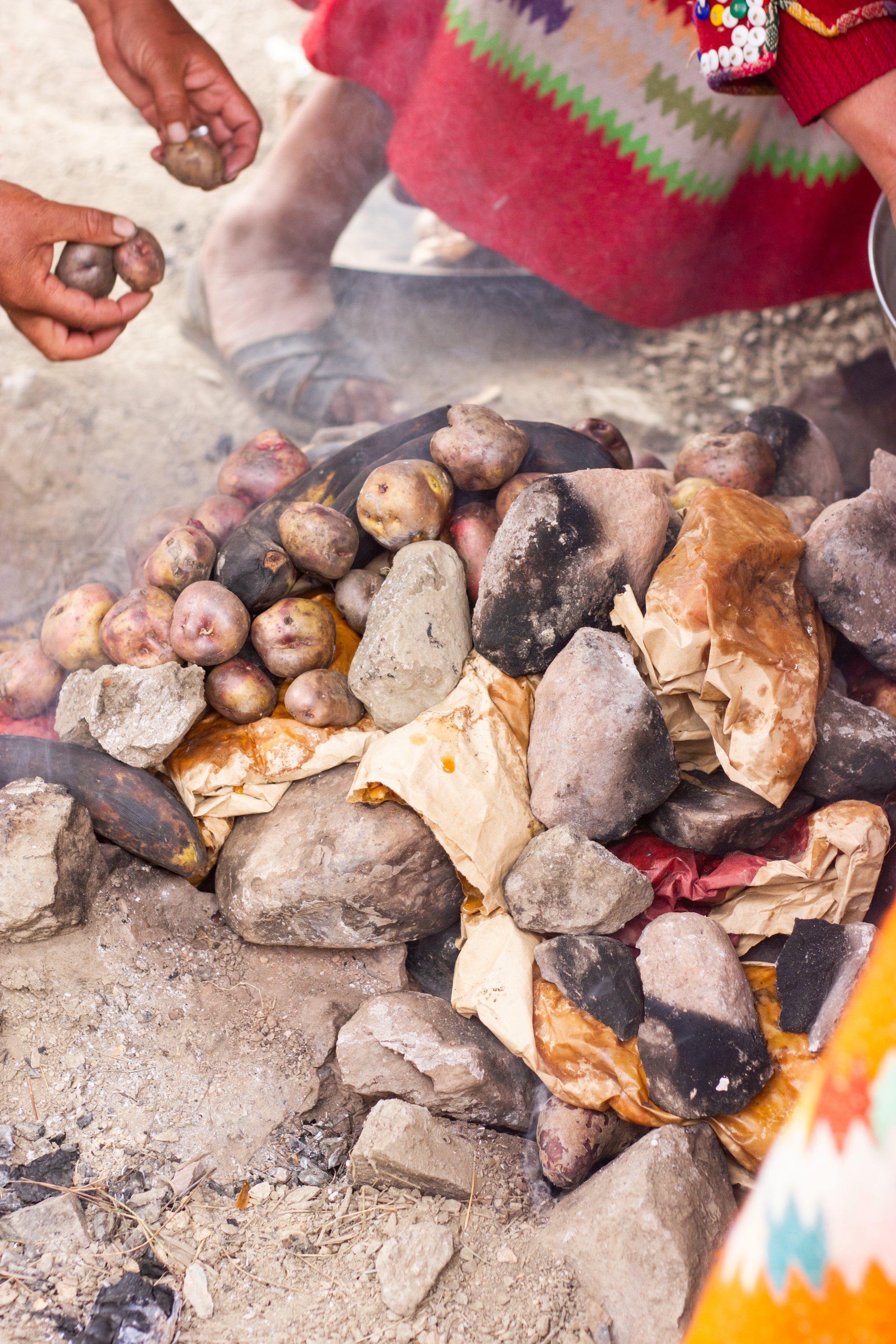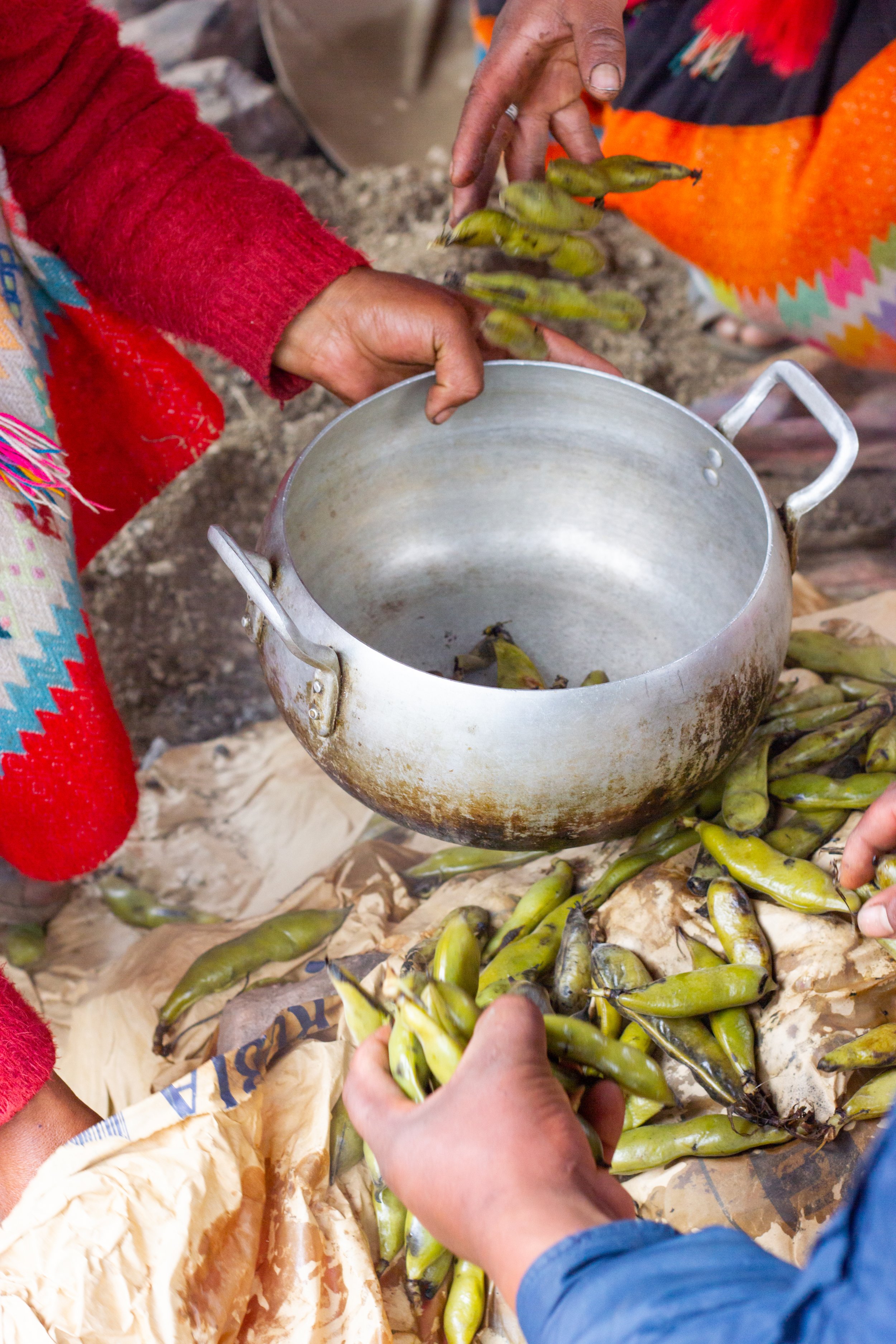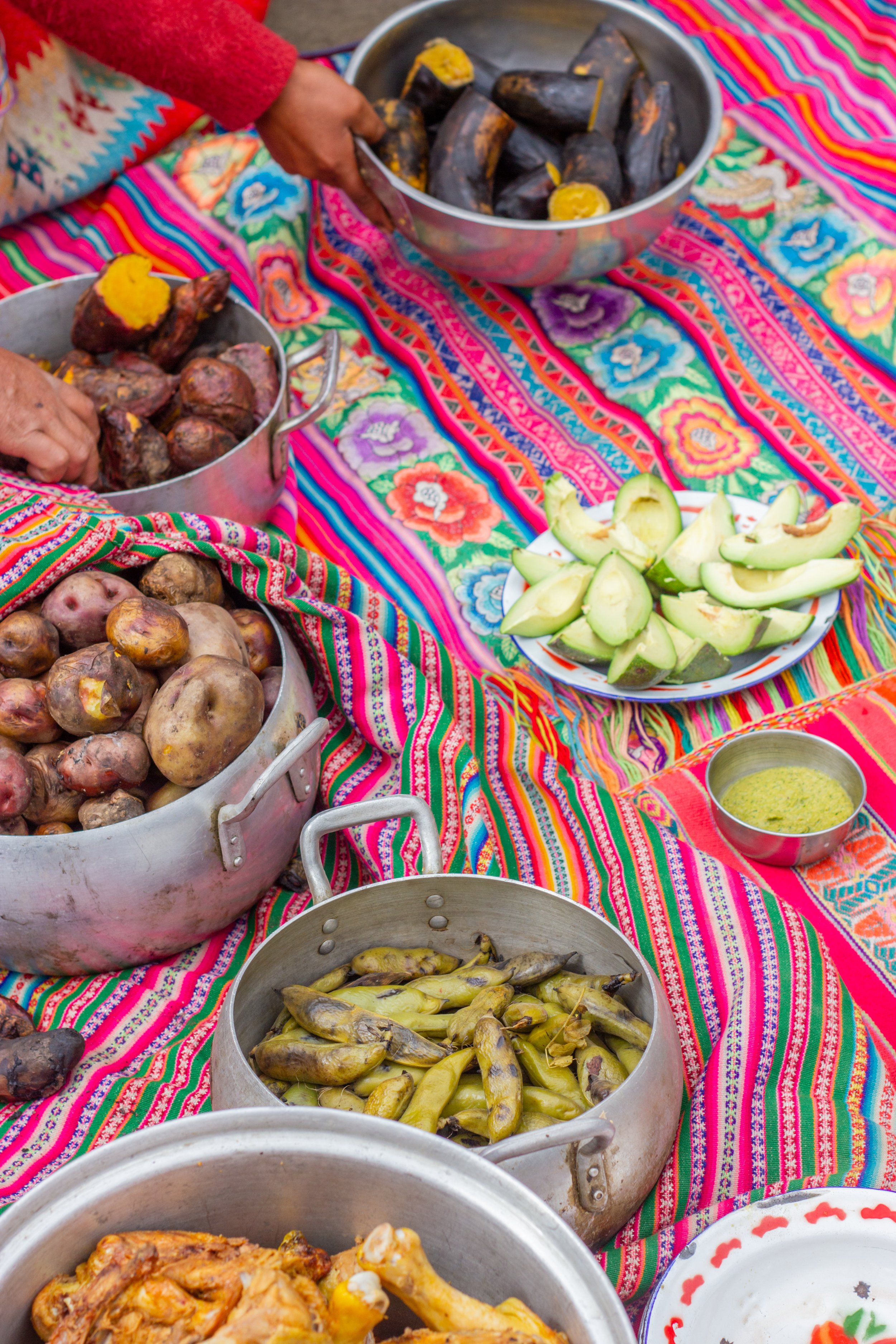I keep thinking about the Pachamanca...
By / Por Leah Pellegrini
Reposted by / Compartido por Aula Artesana
We’ve had the fortune and pleasure of working with Leah Pellegrini over the past 6 months and we finally got to meet her in person when she came down to participate in and photograph our pilot Tintes & Textiles workshop in September. She was especially blown away by one of the lunches included on our trip: the Pachamanca. Read more below.
///\\\///\\\///\\\///\\\///\\\
I keep thinking about the pachamanca. I keep thinking about the way that this ancient cooking technique, which has been practiced in Peru for centuries, produced one of the best meals of my life during our Tintes y Textiles retreat, and by way of basic natural materials: stones, fire, and dirt. And time. Basic, yes, but transformative.
First, the stones were heated over crackling flames, and then piled into a hole dug directly into the ground. Placed around and between them, in layers separated by recycled paper, were the multiple varieties of potatoes that Peru is famous for, like knobby gems; fat green pods of local lima beans; large plantains with their thick, mottled skins still on; hunks of chicken; and ample herbs for flavoring.
Our hosts rushed to cover the assemblage of ingredients with blankets and loose dirt. This was the first time I’d seen these otherwise perpetually placid, patient women convey any sense of urgency, their skirts billowing and hats tipping sideways as they nearly tripped over each other, scrambling to get the job done before the heat rose off.
They heaved shovelfuls of dusty dirt on top until what was left visible was an unassuming mound you’d never know contained buried treasure. And then, we waited, while the roasting, steaming, and stewing all happened beneath the surface.
Everyone in our Tintes y Textiles group settled back into their backstop looms for the second day in a row. From behind my camera, I was watching: the way the workshop participants were sinking into comfortable rhythms with their weaving mentors, how they were getting a grasp on the motions they’d stumbled through the afternoon before. I could see the sort of softening that was happening — the hugs and high fives, the easing into the silence or the gentle chatter, the peacefulness in the gradual progression of things.
The reason I keep thinking about the pachamanca is because we all started that week raw. We were strangers to each other and to Cusco and to the feeling of a backstrap loom tied around the waist. Because we spent a whole day tinting yarn with dye shades made from basic natural materials: crushed leaves and petals and critters, each one heated in a giant metal pot on a simple stove and each one morphing milk-white thread to technicolor. Because everybody ended the retreat, a few days after it began, with hanging textiles in tantalizing shades and patterns they chose and they wove with help from the artisans who’ve all been practicing the craft since they were six years old.
An immersive workshop is a kind of alchemical technique. When you bring a group of unfamiliar people from three separate continents together in the context of learning and exchange, and when you gently immerse them in a new-to-them culture and community, you are building a kind of pachamanca, which is to say: you are placing them in a shared container and allowing time and nature to do their thing. It takes time, it takes time, it takes time: this is a phrase I repeat to myself regularly and one I thought about a lot on that particular pachamanca day. So often, the magic of anything is entwined in the elementary process of time that turns raw ingredients to final product; that makes a patterned, knotted, and completed textile where there once was rough yarn; that yields the most tender fava beans, slipping from the charred edges of their velvety shells, and sweet potatoes like amber candy, made sweeter by the smoke.
Which brings me to the unearthing. The dirt was heaved off again with the shovels, and the blankets and paper were peeled away. The lima beans and plantains and chicken and potatoes were grabbed by hand and tossed quickly, like, well, hot potatoes, into empty pots and bowls. Everything was carried and spread out on a blanket on the ground, and plates and forks were passed around, and we all leaned in, all of us all together, some people on stools and some cross-legged on the ground and everybody hungry from the working and the learning and the laughing, and we ate. And it was, like I said, perhaps the best lunch I’ve ever had.

